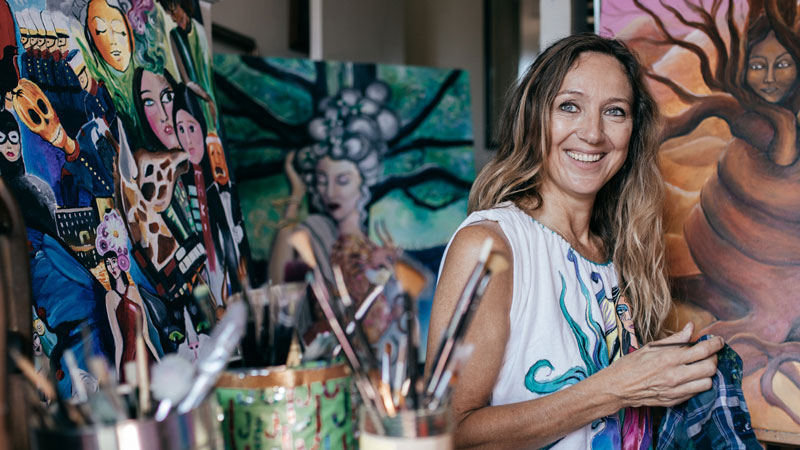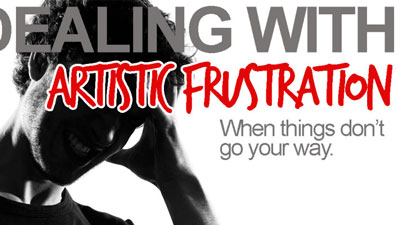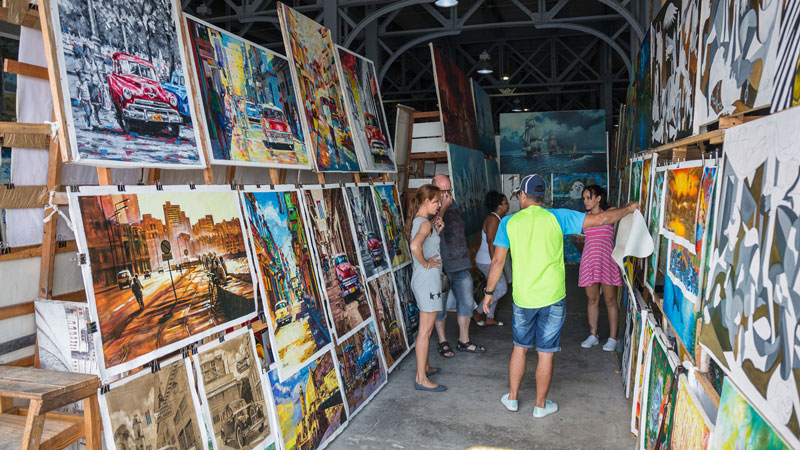
If any of this applies to you, then take heart – you are definitely not alone.
The good news is that you don’t have to be the world’s next “Picasso” to make sells. You just need to know how to sell and selling is a skill that is learned.
Selling Does Not Come Naturally
Selling your art is not something that is natural for most artists. In fact, selling anything is not something that comes easily for most people. But if you are to be a successful artist (meaning that you are selling what you produce), then the reality is that you have to learn how to sell your art. It’s either that, or you have to find someone to sell it for you.
This post explores selling your art through the internet – yourself. Of course, you can always go the traditional route by finding a representative, like a gallery, to sell your work. They, of course, will take a big chunk of your sale price and will undoubtably have a limited reach of potential buyers. That is, if they even accept you and you “fit” into their style. I would not recommend this route to any new artist looking to make art for a profit. There are just too many ways an artist can make money from selling their art today, outside of going through a gallery.
This post will provide you with a strategy for selling your art. I will most likely expand this post into a full course somewhere down the road, because there are so many things to cover. I’ll try to cover everything I can on the surface here, but realize that each one of the topics below can be expanded much, much further.
The Mindset
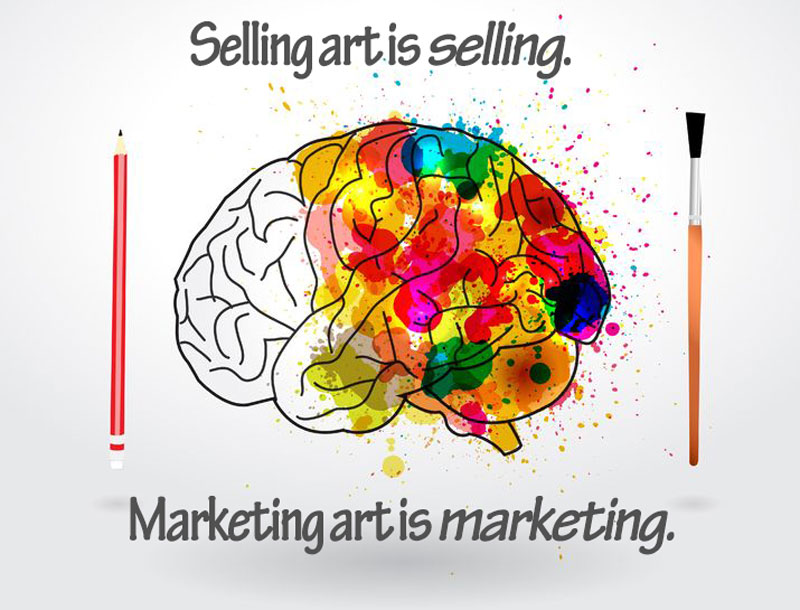
Selling art is selling. Marketing your art is marketing. Selling and marketing require work – sometimes lots of it. You’ve got to understand, that if you are selling your art, then you are selling a product that you produce. This means that your patrons, people who purchase your art, are your customers.
Potential customers do not just “materialize” out of the air. You have to go find them, because they will not come to you. And once you find them, they still may not purchase from you. In other words, you have to create a customer base of potential buyers and a few of them will likely purchase from you.
Too many people think that if they just share their work on a site (like Etsy), then it will sell. While it is possible to make a couple of sales this way, you really need to build a group of potential buyers to see real results.
The good news is that there has never been a better time to do this in the history of mankind. The internet has made it incredibly easy to build a pool of potential customers.
Building Your Audience
We’ll call this “pool of potential customers” your audience. This is because you will be creating a group of people in which you communicate “what you do” and “why you do it”. If your audience likes what you have to say, then they are likely to purchase the art that you produce.
Sure, you will have the occasional buyer that will purchase your art based on simply seeing it. But no one will ever see it if you do not build an audience to help you get your art in front of the eyes of that potential buyer.
So the first thing you need to do is build your audience.
These people will share your work, tell others about it, and eventually buy from you. They will become your “army of salespeople”.
We’ll delve into how you will build your audience in a moment, but first, your website.
Your Website
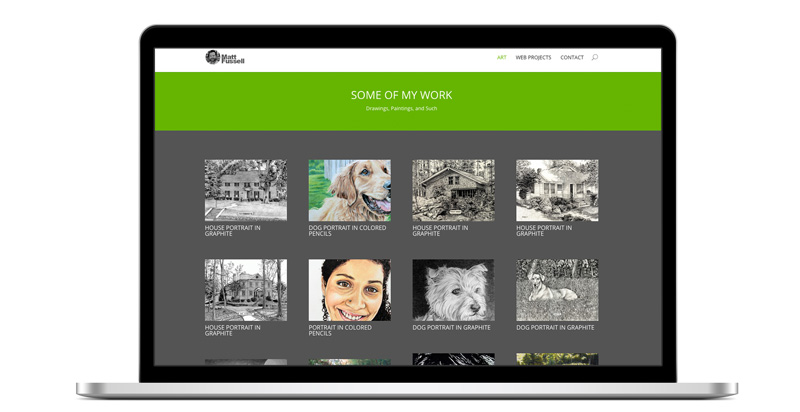
Before we get too far ahead of ourselves, we need to discuss the hub of your promotional efforts – your website. If you are to sell your work, then you absolutely must have a website. No exceptions here. Your website will be your “number one” source of building your audience.
Your website is how you will primarily communicate to the audience that you build. It is not only where you will showcase your work, but also where you will attract potential buyers and most importantly, build trust with that audience.
Your website needs to look professional, while clearly communicating what you’re all about as an artist.
A great example of a professional looking website is that of Emily Winfield Martin. She is also one of the most successful artists on Etsy. It’s no wonder either, because she is doing quite a number of things right.
Her site has a well organized portfolio, links to her store (on Etsy), a clear way to contact her (via her about page), and a blog. Her website is a “hub” for selling.
So how does she build an audience with her website? One way is through her blog. Just take a peak at her blog and scroll through her posts. Pay attention to the comments. Clearly, she has a dedicated following of people who are potential customers. She is building an audience.
When they are ready to buy, they simply navigate to the “Shop” (on Etsy) and make a purchase.
In fact, just about all of the top selling artists on Etsy have a website or blog. This is not a coincidence.
In an article published on Inc.com, the importance of blogging is addressed. The article, about then top Etsy sellers Ashley Goldberg and Drew Bell, mentions just how important blogging is to their success. The article notes that the early success of the duo was in large part due to the following that Ashley had already built through her blog. It goes on to say that since Etsy consists of largely handmade objects, people want to know who people are, what they are in to, and why they make what they do.
The way you communicate these things to your audience is through your website. Blogging and posting on a regular basis provides insight to your audience as to who you are and why you create what you create.
How to Build Your Website
Clearly, a website is a necessity for any artist that wants to sell their work. But the thought of having to build one can be scary for some.
Most people think that you have to be a computer programmer or a web designer to build one. You don’t. In fact, you don’t even need to know how to write one line of code. Creating a website is easier than ever and anyone can do it.
I’ve created a guide for building your own portfolio website from scratch in just a few minutes. This tutorial uses the popular and easy website building platform of WordPress. You can check it out here.
But building your website is merely a small step. You’ll need to do more to start bringing people to your website, making them fans of your work, and most importantly you.
Leveraging Social Networks and Search Engines to Sell Your Art

Before you can expect any real traffic to your website, you’ll first need to find our audience. In order to do this, you need to go to where they are. Remember, they will not come to you.
And where are people on the internet? Facebook, YouTube, Google, Pinterest, Instagram, etc. This is where you will find your audience. These are the places where you will attract your target market and then send them to your website, and eventually your “Shop”.
Here are a few ways you can leverage these resources to start building your audience…
Facebook – Create a Facebook fan page where you post your art. (Don’t post all of your art at one time though. Share it over time.) Share your page with your friends and family at first and encourage them to share with others as well. Soon, you’ll have a nice little following on Facebook.
Artist Natasha Wescoat was able to make $50,000 selling her art exclusively through Facebook. You can read her story and learn how she was able to build such a huge following here. Also, be sure to check out her very active Facebook page where she currently has 47,000+ fans.
YouTube – YouTube is the second largest search engine on the planet. YouTube has over 1 billion users, yes that’s with a “b”. That is an incredibly large pool of potential customers.
Create a YouTube channel and start creating videos of you talking about your work, your process, and perhaps you creating your art. Be sure to mention and link to your website in the video so people that are interested in you and your work will know how to learn more about you.
There is currently a countless number of artists that are leveraging the power of this platform to reach their audience.
It may be slow at first, but over time you’ll start to see a few subscribers and more visitors to your website.
Don’t be afraid to show your face on camera and let your personality show through. Do what you can to connect with the people that may potentially buy your art in your videos.
Pinterest – Pinterest, by far, is one of the most visual social networks out there. Because of its visual nature, it is a perfect place to start sharing your art.
Create several boards of your work and share them with others. Every time you create something new, post it to your boards.
Over time, you’ll start to attract followers and if they like what you are creating, they’ll start “repinning” your art to their boards. As long as you post on a regular basis, it will just continue to grow from there.
Google – I mention Google here, but I’m really referring to any of the search engines out there. When you have a website, some people will find you by conducting a web search. This is assuming that you are posting consistently on your blog.
Post on your blog every time you create a new work. Discuss your process, your inspiration, and the materials that you used.
Write about other artists that inspire you. Offer tips to help others that may want to create art in a similar style as yours.
The more content that you share, the more web traffic you will possibly receive from the search engines. Don’t expect a flood of visitors at first. Traffic from search engines requires consistent posting and quite a bit of content.
Concentrate on one of the resources mentioned above at first, and see what works best for you. Don’t try to enter all of them at the same time. You’ll become overwhelmed if you do.
No matter which resource you decide to concentrate on at first, remember that your goal is to direct people back to your website where they will dig deeper into what you’re all about as an artist.
Connecting with Your “Audience”

Once your potential customers have made it to your website, the work is far from over. You’ll now need to connect with them further.
You’ll connect with your audience through your work and what you write on your blog, but you’ll also want to connect with them after they have left your website.
In order to do this, you may consider creating a “newsletter” that you can email to your potential pool of customers on a regular basis. You can email them every time you post to your blog and when you create a new work of art.
An email list will bring your potential customers back to your website and back to your art, making sales a greater possibility.
You can create a convenient place for them to sign up for your newsletter somewhere on your website, like in the sidebar, or at the bottom of your blog posts.
You may also consider offering an incentive for them sign up to your “newsletter”, like perhaps a free “printable” of one of your works.
In order to have an email list, you’ll need to signup with a service that handles the sending of the emails. Here are a couple that I recommend…
AWeber – AWeber provides you with a simple interface and over 6,000 stock photographs that you can use to spruce up your emails. They offer a 30 day trial for free, which goes up to $19 a month for up to 500 subscribers.
MailChimp – MailChimp offers templates to make your emails look great. They offer their services for free for up to 2,000 subscribers but there is a limit to how many emails you can send. For the auto responder feature to work, you must pay for the services and if you are offering something for free when people sign up (like the free printable), then you’ll definitely need that feature.
Both services provide you with a form that can easily be embedded into your website to collect emails.
Once you start getting those subscribers, be sure to email them frequently and “stay in touch”, but don’t over do it. I’d say an email every few days is plenty.
Remember, your goal is to send your audience back to your website, so include links in your emails back to the art that you are producing.
Final Thoughts
If you are wanting to sell your art, then you clearly have to do much more than make art. You have to market your art. You have to think of yourself as a brand and the art that you make as your product.
Of course, there are plenty of additional ways to sell your art that do not involve the internet. This post is clearly just about selling your work on the internet which is undoubtably the easiest and fastest way to start making sells. And when I say “fast”, I do not mean “over night”.
Honestly, we have only begun to scratch the surface here. As I mentioned in the beginning of the post, I could go much deeper into each one of these topics.
It will take patience and perseverance, but if you market your art (and yourself) properly, then you will make sales.
I’d love to hear your thoughts. Are you selling your work? Are you having any success? Are you failing? Are there any strategies that I’ve missed. Be sure to add your comment in the comments section at the bottom of the page.
If so, join over 36,000 others that receive our newsletter with new drawing and painting lessons. Plus, check out three of our course videos and ebooks for free.




